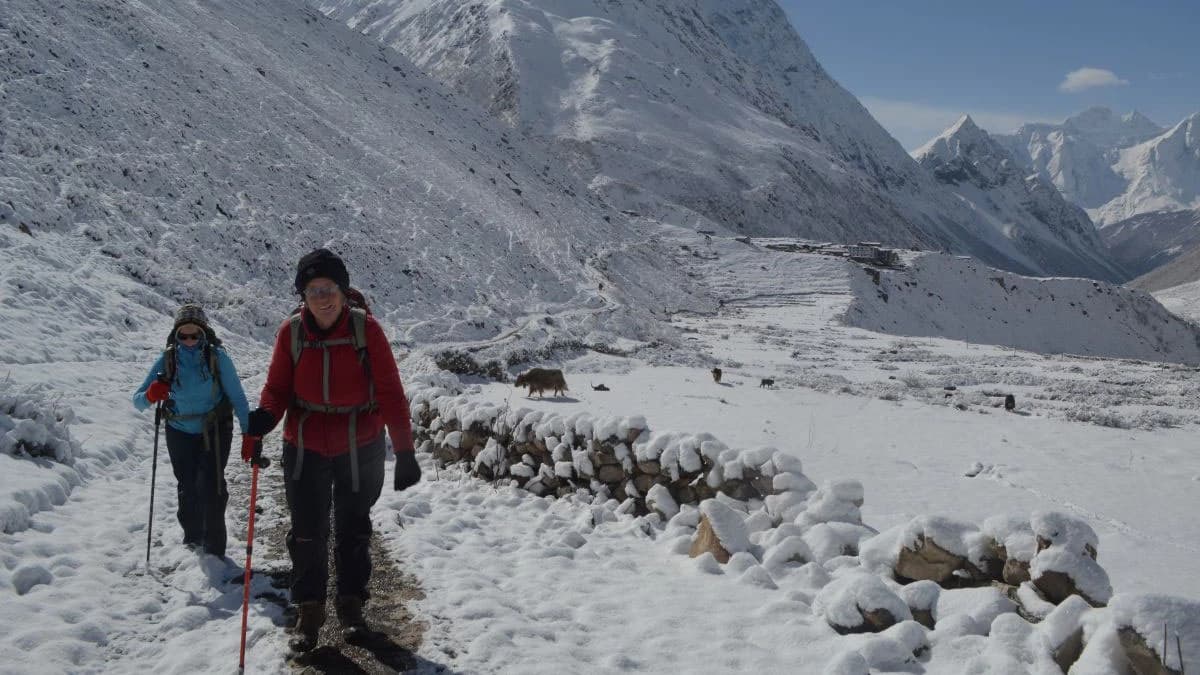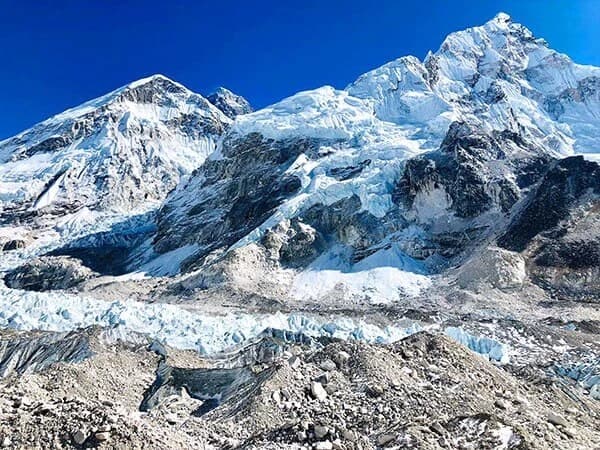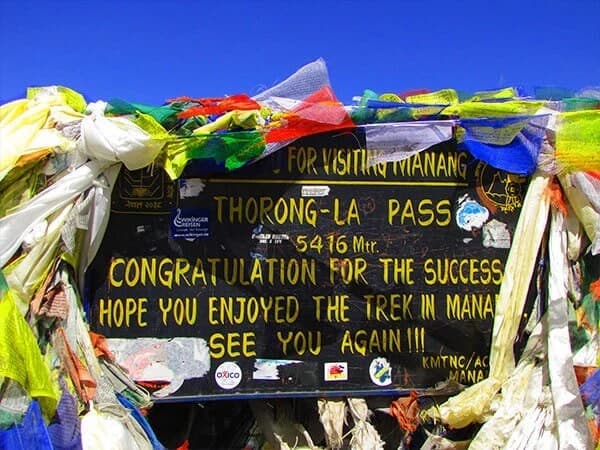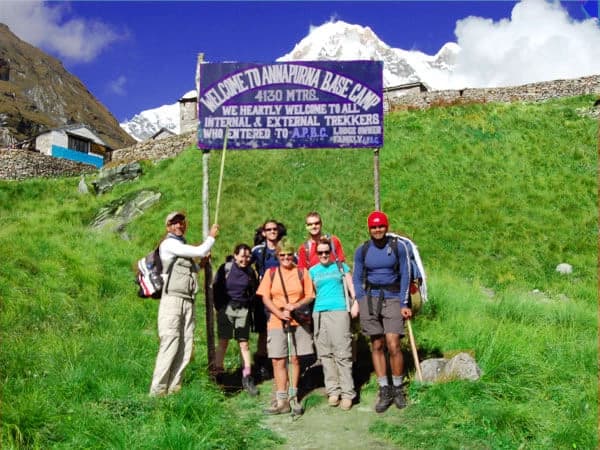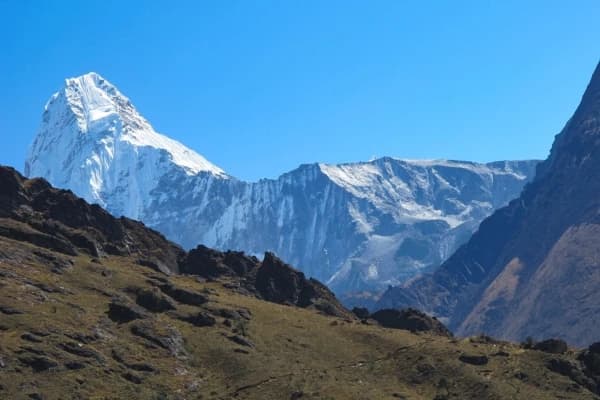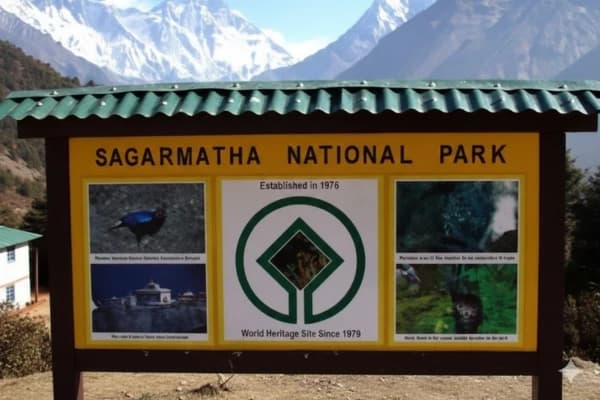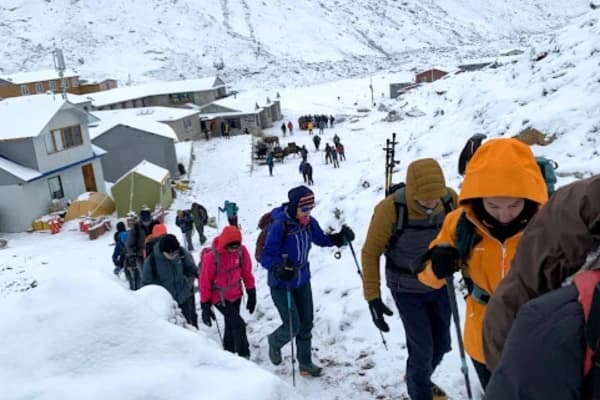Only a few countries across the globe come to mind when you think about trekking, and Nepal religiously makes up the list. Often dubbed as Asia’s undisputed trekking capital, this small country covers everything, from a relaxing few-day hike with grand mountain panoramas to a strenuous multi-week expedition over high mountain passes.
Whether you’re a seasoned high-altitude trekker or a beginner, Nepal offers plenty of fun and challenging options throughout the country. Most journeys while trekking in Nepal begin with a touchdown at Tribhuvan International Airport in Kathmandu.
Many of Nepal’s best treks, especially those in high altitudes, are dotted with cozy teahouses and mountain lodges. A few challenging treks in the remote region involve expedition-style camping.
Most of these treks pass through protected areas and national parks, often surrounded by lush green forests, cascading waterfalls, high valleys, mountain passes, glacial moraines, and elusive wildlife. While Nepal offers routes for all levels of fitness and experience, each brings different adventures and challenges. It is always a good idea to explore your options before committing to a particular route.
Here’s our comprehensive guide to trekking in Nepal. This extensive guide covers the best treks, optimal seasons, what to expect, altitude challenges, and expert tips for a more enjoyable and successful experience.
Trekking in Nepal: Trekking Routes for All Levels
Nepal offers a wide range of options for trekking and expeditions. With so many options, determining the ideal one for your next adventure holiday can be overwhelming. To help you make the right choice, we have compiled Nepal’s top trekking routes that never go out of style!
From short, relaxing adventures to timeless classics and raw, authentic expeditions, let’s take a look at the 15 best treks in Nepal.
Everest Base Camp Trek
The Everest Base Camp Trek is an iconic 12 to 14-day journey to the foothills of the world’s highest mountain. Starting off with an exhilarating flight to Lukla, this trek follows through Sagarmatha National Park, crossing several suspension bridges and famous Sherpa settlements, to stand at the summit of Kala Patthar and enjoy the view of Mount Everest.
Besides the mountain highs, this slow-paced trek also delivers deep cultural and spiritual encounters. Visit one of Khumbu’s largest monasteries at Tengboche Village and immerse yourself in the rituals and prayers of the local monks. Although challenging, the Everest Base Camp Trek is an achievable pilgrimage for both beginners and seasoned trekkers, with comfortable teahouses and a variety of food options.
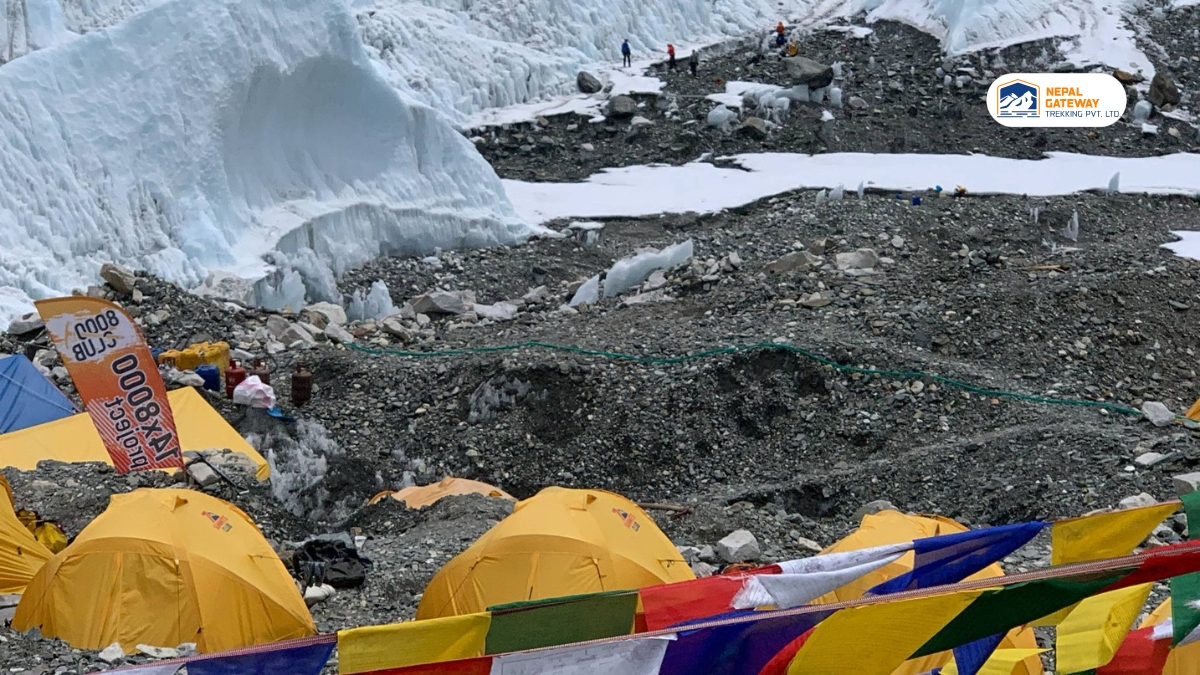 Highlights of Everest Base Camp Trek
Highlights of Everest Base Camp Trek
- Stand at the foothills of Mount Everest — the world’s highest mountain.
- Enjoy a 360-degree panorama of towering mountains, including Mount Everest, Lhotse, Cho Oyu, and Nuptse, from Kala Patthar.
- Visit the centuries-old Buddhist monastery at Tengboche.
- Immerse yourself in the rich culture of the Sherpa community and explore the famous Namche Bazaar.
Key Notes
- Flight delays and cancellations are common in Lukla due to high air traffic and adverse weather conditions. It is advisable to add one or two buffer days to your itinerary.
- This trek involves significant altitude gain (over 5,000 meters), which can cause altitude sickness. It’s crucial to prioritize proper acclimatization before ascending to higher altitudes.
Annapurna Base Camp Trek
The Annapurna Base Camp Trek is a short, moderate excursion deep into the heart of Annapurna Sanctuary. This Himalayan classic provides you the chance to walk among some of the world’s most impressive landscapes and surround yourself in the natural amphitheater of towering peaks.
This 8 to 13 day trek begins in the lake city of Pokhara and traverses lush rhododendron forests, traditional settlements, and high valleys of the Himalayas. Unlike other treks, the Annapurna Base Camp Trek takes you to the foothills of two of Nepal’s most iconic mountains—Annapurna I and Machhapuchhre.
Along the way, you’ll have the opportunity to immerse yourself in Nepal’s rural lifestyle and culture, appreciating its simplicity and strong sense of community. This is an easy-to-moderate trek with comfortable teahouses and decent food options, ideal for moderately fit individuals of all experience levels and age groups.
Highlights of Annapurna Base Camp Trek
- Stand at the foothills of two mountains in one trek—Annapurna I and Machhapuchhre.
- Enjoy a 360-degree panorama of Annapurna I, Annapurna South, Hiunchuli, and Machhapuchhre from the base camp.
- Soothing natural hot spring at Jhinu Danda.
- Relax at the shore of Phewa Lake and stroll around the streets of Lakeside in Pokhara.
Key Notes
- This trek involves countless stone steps over mixed terrain. It is advisable to stay prepared for steady ascents and descents.
- A few sections along the route—particularly between Hinku Cave and Deurali—are prone to avalanches, especially during winter. So, stay cautious and be prepared to take a longer detour if the situation demands.
Annapurna Circuit Trek
The Annapurna Circuit Trek is a classic 11— to 20-day adventure that circumnavigates the entire Annapurna massif. Stretching around 200 kilometers, it begins from the subtropical meadows and climbs through alpine valleys and high deserts before crossing the famous Thorong La Pass at 5,416 meters.
Besides, the Annapurna region is a vibrant tapestry of cultures and lifestyles. From the Gurungs and Magars in the lower hills to the Tibetan-influenced Manangis and Thakalis in the upper reaches, you’ll notice a stark contrast in lifestyle, language, food, dress, and religion throughout the trek.
As a high-altitude trek that requires crossing a mountain pass above 5,400 meters, the Annapurna Circuit Trek demands a high level of fitness and a serious commitment. Therefore, it is not recommended for absolute beginners.
Highlights of Annapurna Circuit Trek
- Conquer the famous Thorong La Pass, one of the world’s highest navigable passes at 5,416 meters.
- Visit the ancient Braga Monastery and the sacred Muktinath Temple.
- Pass through the world’s deepest Kali Gandaki Gorge.
- Explore the old settlements of Manang and Mustang regions.
- Key Notes
This trek involves significant elevation gain, which poses a high risk of altitude sickness. Proper acclimatization and mental preparation are crucial for a safe and successful trek.
Jeep roads have extended to most parts of the lower Annapurna region. If you’re trekking in peak season, expect constant jeep passings and dusty roads. We recommend choosing the alternative routes (Upper Pisang) for a more traditional trekking experience.
Langtang Valley Trek
Langtang Valley Trek is one of Nepal’s most popular short treks. Although relatively gentle-paced, this week-long trek is packed with many trekking wonders, from diverse terrains and authentic Tamang culture to expansive mountain scenery.
Starting at the small town of Syabrubesi, this trek takes you from dense forests, bamboo groves, cascading waterfalls, yak pastures, and alpine meadows to towering mountains and screeching glaciers. The view from the summit of Tserko Ri (5,030 meters) is nothing short of a masterpiece, offering a stunning panorama of the surrounding mountains, valleys, icy glaciers, and the Tibetan plateau.
Beyond the scenery itself, strolling around the windswept alleys and stone-built homes of Kyanjin Gompa feels otherworldly. The Langtang Valley Trek is a gentle-paced excursion in the Himalayas, suitable for all fitness levels and age groups.
Highlights of Langtang Valley Trek
- Hike to the summit of Tserko Ri at 5,030 meters.
- Stunning view of Langtang Lirung, Manaslu, Ganesh Himal, Langshisha Ri, Kimshung, and Ganja La.
- Explore the beautiful Kyanjin Gompa Village and visit the centuries-old Buddhist monastery.
- Visit the local cheese factory at Kyanjin Gompa Village and savor Langtang’s delicious yak cheese.
Key Notes
- The road from Kathmandu to Syabrubesi (past Galchi Bazaar) is rough, dusty, and jagged, with frequent potholes and landslide areas. Expect a wild, bumpy ride to begin and conclude the trek.
Everest Gokyo Lake Trek
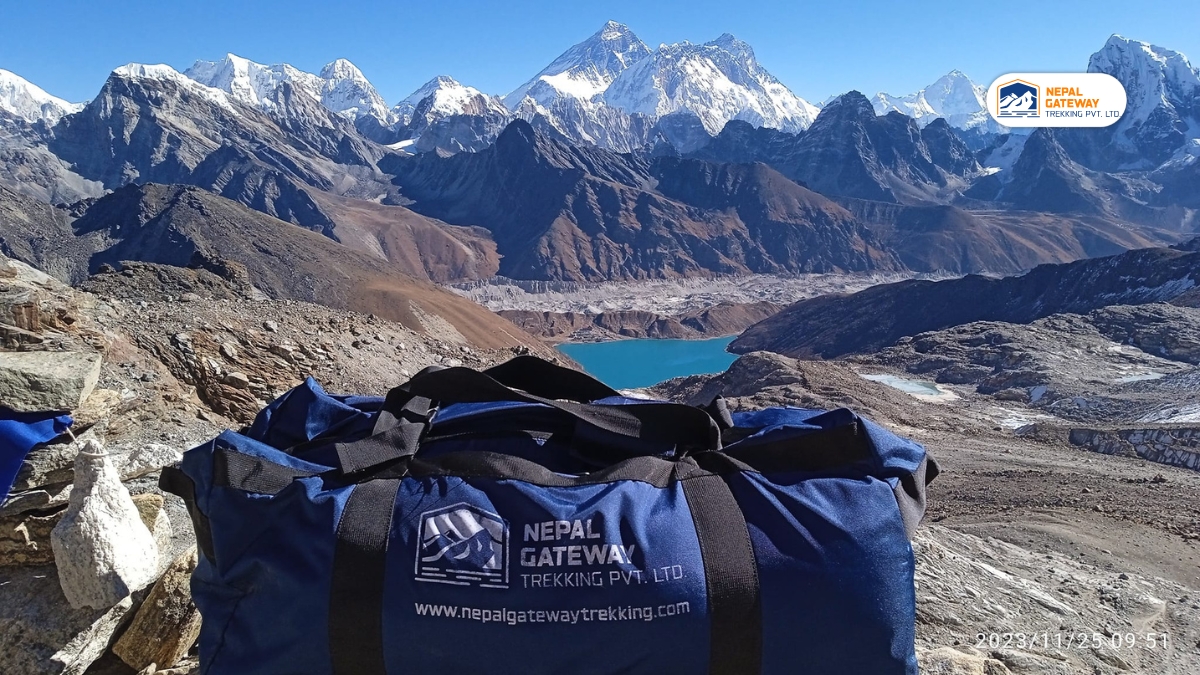
The Everest Gokyo Lake Trek is one of the most popular alternatives to the classic Everest Base Camp Trek. Unlike the standard route, this trek explores hidden Sherpa settlements of the Khumbu Valley. Walking past three pristine Gokyo Lakes, you’ll climb to Gokyo Ri at 5,357 meters to relish the expansive view of the lakes, mountains, and Ngozumpa Glacier.
This trek is ideal for those seeking to avoid the busier trails in the Everest region while still taking in the stunning mountain views, including Mount Everest, Lhotse, Makalu, and Cho Oyu.
For those not in a rush to head back, you can combine the Gokyo Lake Trek with the standard Everest Base Camp Trek, adding extra challenge and a more offbeat experience. However, the extension requires crossing the mighty Cho La Pass at 5,420 meters.
Highlights of Everest Gokyo Lake Trek
- Trudge along the less crowded trails in the Everest region.
- Relax at the shore of the pristine Gokyo Lakes.
- Climb Gokyo Ri at 5,357 meters and relish the vast panorama of some of the world’s highest peaks.
- Explore the bustling town of Namche Bazaar and witness the vibrant Sherpa culture.
Key Notes
- The Everest Gokyo Lake Trek is considered a challenging route in the Everest region. It demands decent physical fitness and mental preparedness. Similar to the standard Everest Base Camp Trek, it poses altitude challenges. Take time to acclimate, stay hydrated, and walk steadily to help prevent altitude sickness.
Ghorepani Poonhill Trek
The Ghorepani Poonhill is one of Nepal’s standout routes for first-timers and novice hikers. This classic week-long trek has long been a favorite among trekkers for its iconic sunrise and breathtaking mountain panorama from the Poon Hill Viewpoint. It is the perfect trail for those looking to savor the taste of the Himalayas without committing to the extreme altitude.
Starting from the lake city of Pokhara, this trek takes you through rice paddies, lush rhododendron forests, and traditional Gurung villages in the heart of the Annapurna region. The entire route of the Ghorepani Poonhill comes alive in spring as rhododendrons and wildflowers burst into bloom in shades of red, pink, and white.
Moreover, walking along the narrow alleyways and old stone-built houses of Ghandruk offers a timeless experience. Here, you’ll have the opportunity to comprehend the ancient tradition, customs, and history of the Gurung community.
Highlights of Ghorepani Poonhill Trek
- Relish the glorious sunrise over the Himalayas from Poon Hill Viewpoint (3,210 meters).
- Enjoy the 360-degree mountain panorama of Annapurna I, Dhaulagiri, Annapurna South, Machhapuchhre, and Hiunchuli.
- Explore the famous Ghandruk Village and immerse yourself in the centuries-old tradition, lifestyle, and history of the Gurung community.
- Witness the full rhododendron bloom in spring.
Key Notes
- Since this trek is renowned for its iconic sunrise view, expect an early start on the day of the Poon Hill hike. It is best to start the climb from Ghorepani around 4:00 AM to reach the viewpoint on time to witness the golden sunrise over the Himalayas.
- Accommodations on this trek range from basic teahouses to well-equipped mountain lodges.
Manaslu Circuit Trek
The Manaslu Circuit Trek is a classic yet unspoilt Himalayan adventure that meanders through the mountains east of the Annapurna. This 12— to 18-day trek combines almost everything, from lush woodlands to tranquil villages, natural hot springs, deep gorges, icy lakes, ancient monasteries, and breathless mountain passes.
Along with the change in scenery and landscape, you’ll notice a striking difference in the local cultures and lifestyles. While the lower region is mainly dominated by the Gurungs and Magars, the upper section of the trek is predominantly inhabited by Tibetan-influenced Nupri and Bhotia communities.
The Manaslu Circuit is often associated with a sense of sacredness and spiritual experiences as it takes you across several ancient monasteries, including Kargyu Chholing Monastery, Sama Gompa, Mu Gompa, Lho Monastery, and Pungyen Gompa.
The Manaslu Circuit Trek is raw, remote, and strenuous compared to other teahouse treks in Nepal. Therefore, it is suitable for seasoned trekkers and people with a high fitness level.
Highlights of Manaslu Circuit Trek
- Enjoy the sense of seclusion and remoteness in the classic circuit trek around Mt. Manaslu.
- Cross the formidable Larkya La Pass at 5,106 meters.
- Relish the rare sights of Mt. Manaslu and the Annapurnas from the north.
- Explore the centuries-old Pungyen Gompa and Manaslu Base Camp.
Key Notes
- Since the Manaslu Circuit lies within the restricted area, all trekkers must obtain a Restricted Area Permit (RAP). Additionally, independent trekking is not allowed in this region. You must be a part of a registered group and travel with a licensed trekking guide.
- There are several landslide-prone areas along the route of the Manaslu Circuit. Be cautious of the terrain, and watch out for loose rocks and unstable sections. If possible, avoid trekking in this region during the monsoon.
Gokyo Renjo La Pass Trek
The Gokyo Renjo La Pass Trek has long been a favorite among avid travelers who prefer a quieter experience in the Everest region. This strenuous, two-week-long adventure combines the pristine Gokyo Lakes with crossing the formidable Renjo La Pass at 5,357 meters.
The Gokyo Renjo La Pass Trek offers a more immersive experience of the Khumbu region’s rich culture and lifestyle, as it takes you across less-trodden Sherpa villages, such as Lungden and Thame. The summit of Renjo La offers mesmerizing mountain vistas of Mount Everest, Lhotse, Makalu, Nuptse, and the Ngozumpa Glacier from an entirely different perspective.
Compared to the standard EBC Trek, the Gokyo Renjo La Pass Trek is a more challenging yet rewarding adventure. It is suitable for seasoned trekkers with a high level of physical fitness.
Highlights of Gokyo Renjo La Pass Trek
- Stand at the shore of the serene, sacred Gokyo Lakes.
- Hike Gokyo Ri and relish the 360-degree views encompassing the surrounding mountains and Ngozumpa Glacier.
- Conquer one of Nepal’s most challenging high passes, Renjo La Pass at 5,357 meters.
- Explore the authentic Sherpa village of Thame and visit the historic Thame Monastery.
Key Notes
- Gokyo Renjo La Pass is a challenging trek that demands excellent fitness, high stamina, and serious commitment. It also requires proper acclimatization and proven hiking experience, as you’ll spend a minimum of eight nights above 3,000 meters throughout the trek.
- Since this trek involves crossing a mountain pass with rocky and icy paths, we recommend carrying crampons to improve traction in slippery sections and trekking poles to improve stability and balance.
Mardi Himal Trek
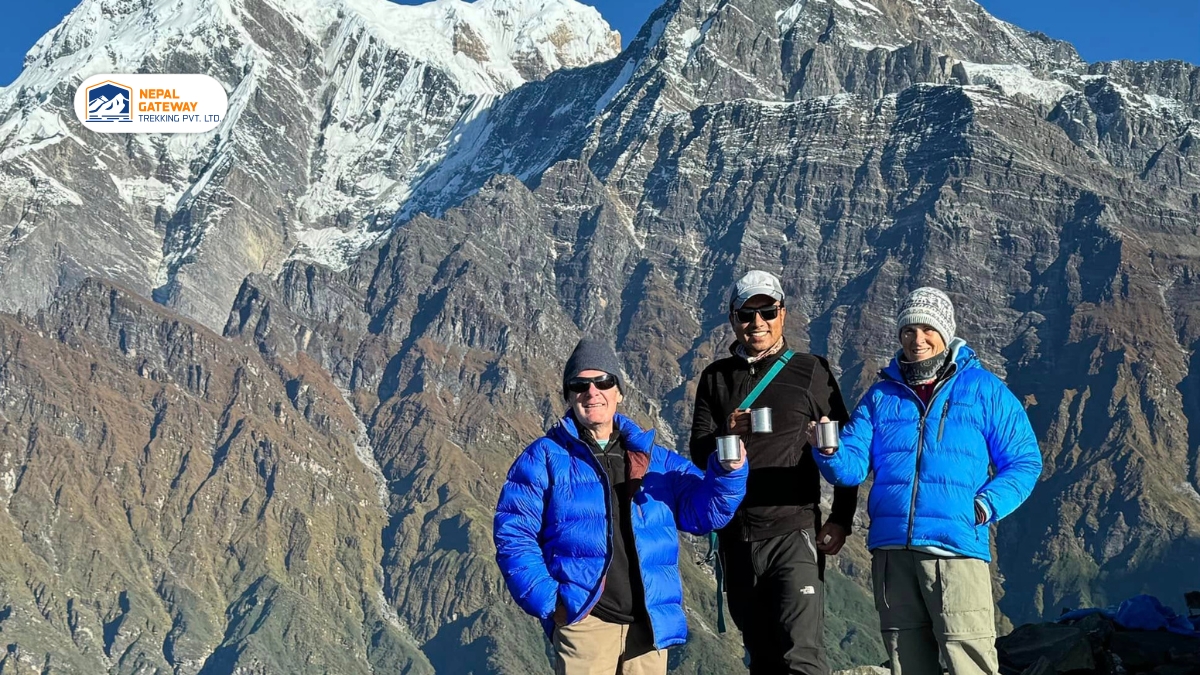
The Mardi Himal Trek is a less challenging yet hidden gem in the ever-popular Annapurna region. Although short, the journey to the foothills of Mardi Himal presents trekkers with an irresistible opportunity to experience nature’s embrace. The close-up view of Machhapuchhre, Hiunchuli, and Annapurna South from Mardi Himal Viewpoint is arguably one of the best sights you’ll get of these mountains.
Like most treks in the Annapurna region, the Mardi Himal Trek begins from the bustling streets of Pokhara. Over the next few days, it winds through lush green forests to barren mountain ridgelines, offering diverse landscapes and climates.
Although this trek is best known for its mountain scenery, it also delivers an authentic cultural experience. At the end of the trek, you’ll spend a night at a community-based homestay in Lwang Village to witness the authentic Gurung hospitality and lifestyle.
Highlights of Mardi Himal Trek
- A short trek with one of the best views of Machhapuchhre, Hiunchuli, and Annapurna South.
- Trek through mystical rhododendron forests and witness their crimson blossoms.
- Unlike other crowded trails in the Annapurna region, the Mardi Himal trek offers a more peaceful and remote experience.
- Encounter the authentic Gurung hospitality and lifestyle in the community-based homestays in Lwang Village.
Key Notes
- Over the last few years, Mardi Himal has gained significant popularity among local travelers due to its short duration and accessibility. This means the trail can get busier during peak seasons.
- As a newly opened route, most teahouses in Mardi Himal (particularly High Camp) are basic with limited amenities. However, upgraded lodges with better facilities are slowly emerging due to the trek’s rising popularity. For now, pack warm layers and adjust your expectations.
Langtang Gosaikunda Trek
The Langtang Gosaikunda Trek is a stunning extension that combines the classic Langtang Valley Trek with a sacred pilgrimage to the high-altitude lake of Gosaikunda. This exclusive two-week trek combines the best of the Himalayas with extensive mountain scenery, a sacred high-altitude lake, a mountain pass, and authentic Tamang culture.
Beyond the scenery, this trek shows a profound connection between Buddhism and Hinduism in terms of their shared religious heritage. If you visit the holy lake of Gosaikunda during Janai Purnima, you’ll witness a powerful spiritual gathering, where thousands of Hindu and Buddhist pilgrims come to take a ritual bath in its icy water.
The Langtang Gosaikunda Trek is ideal for those seeking a blend of natural beauty, cultural encounters, spiritual experiences, and moderate physical challenges, all within a relatively short and accessible itinerary.
Highlights of Langtang Gosaikunda Trek
- Explore the quaint valleys of the Langtang and Helambu regions.
- Visit the ancient Kyanjin Gompa and Sing Gompa for cultural and spiritual immersion.
- Reach the sacred lake of Gosaikunda.
- Cross the Lauribina Pass at 4,610 meters.
- Climb Tserko Ri at 5,030 meters to enjoy the surreal mountain panorama.
Key Notes
- Gosaikunda Lake holds deep religious significance for both Hindus and Buddhists. Therefore, it is essential to be culturally sensitive and maintain a respectful presence in the area around the lake. We kindly request that all travelers remove their shoes near prayer areas, wear proper attire during the holy bath, and maintain a peaceful atmosphere around the lake.
Kanchenjunga Circuit Trek
The Kanchenjunga Circuit is a challenging trek in Nepal’s remote and rarely visited northeastern region. This epic journey weaves through the hidden settlements of the Limbu and Rai communities to reach two base camps of Mt. Kanchenjunga, the world’s third-highest mountain.
Another highlight of the Kanchenjunga Circuit Trek is crossing over two of Nepal’s most rugged mountain passes — Sinion La (4,650 meters) and Mirgin La (4,470 meters). With no trace of another living being in sight, the sweep of Himalayan giants, rugged terrains, and empty wilderness truly feels like an ever-welcoming home.
Unlike the popular trails, the classic Kanchenjunga Circuit offers an authentic Himalayan experience with raw wilderness, magical views, and remote cultural encounters. This is the perfect trek for those looking to disconnect from the world and reconnect with nature.
Highlights of Kanchenjunga Circuit Trek
- Visit both base camps of Kanchenjunga in Nepal: Pang Pema (5,140 meters) and Ramche (4,580 meters).
- Cross two iconic high-altitude passes — Sinion La (4,650 meters) and Mirgin La (4,470 meters).
- Follow the icy paths along the Kanchenjunga Glacier and Yalung Glacier.
- Enjoy the spectacular views of Kanchenjunga, Makalu, Everest, and Chamlang.
- Walk past the remote villages of the Limbu and Rai communities.
Key Notes
- Kanchenjunga Circuit no longer requires expedition-style camping, as basic hut accommodations have been established along key sections of the trail. However, these facilities are extremely basic, featuring simple wooden shelters, shared sleeping spaces, no insulation, and limited amenities. It is advisable to bring a sleeping bag to keep yourself warm and protected.
- Kanchenjunga Circuit lies within a government-designated restricted area. Therefore, you must obtain a special permit for the restricted area and hire a certified trekking guide to access this region.
Everest Three High Passes Trek
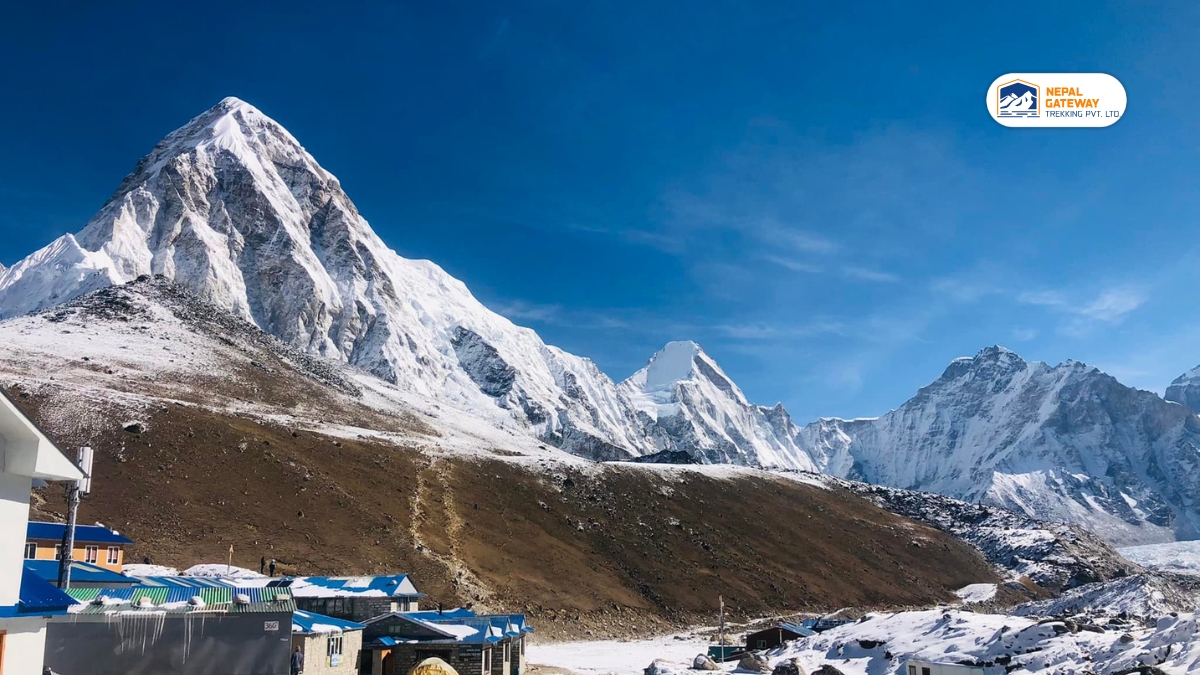
The Everest Three High Passes Trek is a challenging, high-altitude journey that navigates the best of the Everest region. It combines the iconic Everest Base Camp with the untouched beauty of the Gokyo Valley and Khumbu’s three spectacular mountain passes—Kongma La (5,535 meters), Cho La (5,420 meters), and Renjo La (5,360 meters).
This trek defines the ultimate Everest experience, taking you beyond the crowded trail into the Khumbu’s remote valleys and glacial landscapes. Moreover, it takes you to the summit of two of the Himalaya’s legendary viewpoints—Kala Patthar (5,545 meters) and Gokyo Ri (5,357 meters), each offering stunning panoramas of Mount Everest, Makalu, Lhotse, and Cho Oyu.
Although strenuous, this does not require technical climbing skills or experience. For avid trekkers seeking the most challenging and rewarding circuit in the Khumbu region, the Everest Three High Passes Trek is the ultimate option.
Highlights of Everest Three High Passes Trek
- Stand at the foothills of Mount Everest, the world’s highest mountain.
- Cross three major passes of Everest — Kongma La (5,535 meters), Cho La (5,420 meters), and Renjo La (5,360 meters).
- Climb two iconic viewpoints of Khumbu—Kala Patthar (5,545 meters) and Gokyo Ri (5,357 meters).
- Trek to the untouched valley of Gokyo and relax at the shore of pristine Gokyo Lakes.
- Walk across Ngozumpa Glacier, the Himalayas’ longest glacier.
Key Notes
- Everest Three High Passes Trek is a strenuous, high-altitude adventure that involves crossing three mountain passes, navigating icy glaciers, and traversing loose scree slopes. Therefore, it requires excellent fitness, proper acclimatization, prior trekking experience, and high-end gear such as crampons, poles, and gaiters.
Annapurna Circuit Trek with Tilicho Lake
This ultimate trek extension combines the classic Annapurna Circuit with a daring detour to the raw, ice-carved sanctuary of Tilicho Lake (4,919 meters). It follows the main Annapurna Circuit route until Manang Valley and diverges through arid canyons towards Tilicho Lake. It rejoins the main circuit at Yak Kharka and continues towards crossing the iconic Thorong La Pass at 5,416 meters.
The Annapurna Circuit Trek with Tilicho Lake also introduces you to the rich culture of Manangis and Thakalis who call this region their home. You’ll have the opportunity to explore their remote settlements and visit their centuries-old monasteries and temples, allowing for a profound cultural and spiritual immersion.
This is a strenuous, high-altitude adventure suitable for seasoned trekkers and adventure enthusiasts willing to immerse themselves in the raw nature, culture, and history of the Himalayas.
Highlights of Annapurna Circuit Trek with Tilicho Lake
- Cross the mighty Thorong La Pass at 5,416 meters.
- Stand at the shore of Tilicho Lake, one of the world’s highest glacial lakes.
- Visit the ancient Braga Gompa and Muktinath Temple.
- Relish the exceptional scenery of the Annapurna Massif, Dhaulagiri, Manaslu, Gangapurna, Tilicho Peak, and Nilgiri.
Key Notes
- There are a few sections around Shree Kharka and Tilicho Base Camp that are prone to landslides. Therefore, exercise extreme caution while passing through this section and avoid this route during heavy rainfall.
Upper Mustang Trek
Nestled in the rain shadow of the Himalayas, the Upper Mustang Trek is a journey through Nepal’s high desert into the ancient kingdom of Lo. This 14—to 18-day adventure offers a stark diversity in culture, lifestyle, and landscapes.
Starting with an exhilarating flight to Jomsom, this trek follows the world’s deepest Kali Gandaki Gorge and ochre cliffs to reach the walled city of Lo Manthang. The Upper Mustang is home to some of Nepal’s most secluded monasteries and hidden cave complexes, adorned with exquisite Tibetan Buddhist murals dating back to antiquity.
Being isolated from the outside world for centuries, this region has retained a unique culture, customs, language, and spiritual tradition. Trekking into the remote, high-altitude settlements of Upper Mustang feels like stepping into a historic, living museum that is rare to find elsewhere in the world.
Highlights of Upper Mustang Trek
- Explore the ancient Kingdom of Lo Manthang.
- Visit centuries-old monasteries, including Chode Gompa, Jampa Monastery, and Thupchen Gompa.
- Traverse through Kali Gandaki Gorge, the world’s deepest gorge.
- Trek along the stark desert landscape surrounded by dry cliffs, spires, and sky caves.
Key Notes
- Upper Mustang lies within a government-designated restricted area, requiring a special permit to access the region. The Restricted Area Permit (RAP) for the Upper Mustang Trek costs USD 500 per person for the first 10 days, with an additional USD 50 per day thereafter.
- Independent trekking in the Upper Mustang region is strictly prohibited. Travelers must hire a registered trekking guide and travel in a group of at least two people.
Pikey Peak Trek

For those looking for a short and easy trek in the Everest region, Pikey Peak ticks all the right boxes. This week-long journey in the rolling foothills of Solu passes through dense rhododendron forests, remote Sherpa settlements, and off-the-beaten paths to the summit of Pikey Peak (4,067 meters).
Pikey Peak Viewpoint offers one of the most breathtaking mountain vistas, stretching from Everest to Kanchenjunga. Moreover, this short trek takes you to the Buddhist retreat community and monastery of Thupten Choling, which is home to approximately 500 Tibetan Buddhist monks and nuns. At this monastery, you’ll have the opportunity to gain a deep understanding of monastic life, prayer rituals, and Tibetan traditions of the Sherpa community.
Unlike other treks in the Everest region, the Pikey Peak Trek offers the most authentic trekking experiences, with its off-the-beaten trails and less commercial infrastructures.
Highlights of Pikey Peak Trek
- A short and low-altitude trek that delivers the Everest experience.
- Hike to the popular Pikey Peak Viewpoint at 4,067 meters.
- Relish one of the best sunrises, glistening over the 8,000m giants, including Everest, Makalu, and Kanchenjunga.
- Visit the ancient Thupten Choling Monastery.
Key Notes
- Pikey Peak Trek was recently opened for tourism. Although a few newer lodges in Junbesi are standard, most remain extremely basic, with shared rooms, common toilets, and limited menus. We recommend you prepare for a rustic adventure and lower your expectations before hitting the road.
When to Go Trekking in Nepal?
There is no one-size-fits-all when it comes to choosing the best time to trek in Nepal. While autumn and spring are the peak seasons for classic high-altitude trails, the best season largely depends on where you want to go, your tolerance for crowds, and your appetite for adventure.
Autumn brings the most significant number of trekkers to Nepal. It delivers clear blue skies, iconic mountain views, stable weather, and the best trekking conditions, especially for high mountain passes and remote destinations. While the visibility and weather are unmatched, the trails are bustling with trekkers, and the teahouses are often filled to the limit.
Spring brings relatively warm temperatures, blossoming flora, and vibrant trails. Although the mountain visibility is relatively low due to occasional precipitation and hazy skies, this season showcases blooming rhododendron forests, lush green valleys, and soothing birdsongs. Spring is the perfect season for bloom-chasers and wildlife spotters in the lowlands. Similar to autumn, the trails and teahouses often get busy during this time of the year.
The early winter in Nepal is often dry, clear, and stable, bringing a peak-season experience with much fewer crowds. However, the peak winter brings extreme cold and frequent snowfall. Trekking in high altitude becomes treacherous with many teahouses and mountain passes shutting down due to extreme weather. However, low-altitude treks like Poon Hill, Pikey Peak, and Langtang can be rewarding with empty trails, crystalline air, and epic mountain sceneries.
The monsoon is often considered the least favorite season for trekking in Nepal. It is due to excessive rainfall, hazy skies, cloud cover, and hot temperatures. The monsoon also brings a high risk of landslides, flight cancellations, and leech attacks. However, this is the best time to experience the Trans-Himalayan region of Nepal, including Mustang, Dolpo, and Manang. Located in the Himalayan rain shadows, these regions mostly remain dry and sunny during monsoon, offering stunning scenery of the arid landscapes.
What to Expect While Trekking in Nepal?
Accommodation
Teahouses are the most common form of accommodation in the main trekking routes of Nepal. They are simple stone or wooden buildings, often family-run, with basic rooms, shared toilets, and a common dining area. However, accommodation can vary significantly from one region to another.
On popular routes like Everest and Annapurna, it is possible to stay at luxurious mountain lodges, offering private rooms with attached bathrooms, in-room services, and electric blankets. However, in remote regions like Dolpo and Kanchenjunga, you’ll either have to manage with ultra-basic stone huts or tented camps. These facilities prioritize functionality over comfort.
Meal
Most teahouses offer a similar set menu that revolves around carb-heavy comfort food. Dal Bhat (rice, lentil soup, and vegetable curry) is the staple in the mountains and is often readily available wherever you go. Other local options include momo, noodle soup, fried rice, chowmein, thukpa, and potatoes.
Popular trekking routes, such as Everest and Annapurna, also offer a wide variety of continental meals, including pizza, spaghetti, pasta, and sandwiches. Although meat is available in almost all regions, we recommend sticking to vegetarian options for safety.
It is common for meals to become more expensive the higher you go into the mountains, as most ingredients and packaged items must be carried by porters or yaks.
Drinking Water
Access to clean water isn’t something to stress about while trekking in Nepal. Most teahouses and lodges offer tap water for free and boiled water for a small price. However, it is always advisable to treat tap and boiled water for added safety. Carry a reusable water bottle with a filtration system or purification tablets to treat your water before drinking.
You can buy bottled water on most trekking trails (except Everest and Annapurna). However, plastic waste from bottled water is one of the biggest environmental concerns in mountain ecosystems. Therefore, it is best to avoid buying bottled water while trekking in Nepal.
Trail Conditions and Terrain
The trails and terrains in Nepal vary hugely from one region to another. Most trails offer a mix of stone staircases, forested trails, rocky paths, high ridges, and dirt switchbacks. Besides that, a few trails even take you across landslide zones, avalanche-prone areas, and scramble over glacial moraines.
The lower region of the trek mostly traverses through subtropical forests, lush green hills, and terraced fields. Once you ascend above 3,500 meters, the landscape changes drastically to barren, windswept, and alpine terrain.
The trails in popular regions, such as Everest, Annapurna, and Langtang, are well-marked and well-maintained. However, the condition of the trail contrasts significantly in the remote parts of the country, including Upper Dolpo, Kanchenjunga, and Dhaulagiri.
Infrastructure and Connectivity
Major trekking regions feature well-maintained infrastructure, including comfortable teahouses, charging facilities, WiFi services, and accessible health posts. While mobile connectivity becomes inconsistent as you climb high, most teahouses in these regions offer paid WiFi services for a small charge.
In remote areas, however, the infrastructure is far less developed compared to Everest and Annapurna. The trails are not properly marked, the teahouses are basic, medical facilities are limited, and electricity is not available everywhere. You can expect total disconnection for days or even weeks due to poor mobile connectivity and WiFi services.
Cultural Interactions and Sensitivity
The trails of Nepal weave through centuries-old cultures and traditions. With its diverse array of tribes and ethnicities, trekking in Nepal can be a rich cultural experience. While most mountain communities welcome trekkers with open arms, it is essential to be respectful of their culture and lifestyle.
Here are a few things you should be mindful of while trekking in Nepal
- Greet locals and fellow trekkers with a courteous “Namaste.”
- Avoid overly revealing clothes, especially in remote villages and religious sites.
- Always remove your shoes before entering religious sites, such as monasteries and temples.
- Always walk clockwise around temples, stupas, and mani walls.
- Take permission before photographing people, homes, or private rituals.
- Always use your right hand while eating or passing items to the locals.
Understanding Altitude Sickness While Trekking in Nepal
Altitude is one of the biggest challenges while trekking in Nepal. Altitude sickness, also known as Acute Mountain Sickness, is a medical condition that can affect trekkers and climbers who ascend to high elevations too quickly. Altitude sickness can affect even the fittest individual if they do not practice proper acclimatization.
Everyone reacts to altitude differently. Some trekkers may start to experience symptoms as low as 2,500 meters, but severe symptoms are relatively rare below 3,500 meters. By the time you reach 5,000 meters, the oxygen level drops roughly 50% below sea level, putting your body through extreme stress. At this elevation, it is common to feel a mild headache and exhaustion. However, it is essential to be aware of your body and watch for other symptoms that may start to appear.
Note that Acute Mountain Sickness is not always gradual. If you ignore early symptoms, this condition can escalate quickly into a severe, life-threatening condition like HAPE or HACE, both of which require immediate descent and urgent medical attention.
Symptoms of Altitude Sickness
- Mild to Moderate AMS: Persistent headache, dizziness, nausea, shortness of breath, loss of appetite, fatigue, and difficulty sleeping.
- HACE: Severe headache, disorientation, vomiting, loss of coordination, visual impairment, and inability to walk straight.
- HAPE: Persistent cough, shortness of breath (dyspnea), blue skin or lips, chest tightness, rapid heart rate, and breathlessness at rest.
Prevention of Altitude Sickness
- Follow a well-planned itinerary with proper acclimatization days to allow your body to adjust before ascending to higher elevations.
- Once you ascend above 3,000 meters, limit your altitude gain to less than 500 meters, whenever possible.
- Stay hydrated by consuming at least 3 to 4 liters of water, tea, soup, or broth-based meals regularly.
- Avoid alcohol, cigarettes, and other stimulants as they dehydrate your body and often mask early symptoms.
- Consume enough calories and nutrients to stay energized in the mountains. Eat carb-heavy foods (Dal Bhat) as they require less oxygen to metabolize.
- Add a rest day every 3 to 4 days (above 3,000 meters) to let your body recover from long-distance walks.
Trekking Tips for Beginners
While it is tempting to choose the popular treks like the Everest Base Camp Trek or the Annapurna Circuit Trek, it is crucial to select a trek that aligns with your experience, fitness level, and time constraints. If you’re just getting started, consider a beginner-friendly trek, such as Ghorepani Poon Hill and Pikey Peak, to gain an understanding of the terrain, local people, and altitude.
Treks in the Himalaya of Nepal bring a substantial physical challenge. Regardless of your experience, good fitness will make your trek more enjoyable and successful. So, build your mental and physical endurance with regular walks and hikes. Additionally, if you prefer to hit the gym, focus on developing your cardio fitness, core strength, upper body, and leg muscles.
Packing for treks can often be overwhelming, resulting in either overpacking or underpacking. So, stick to the basics: “Pack light, but smart.” We recommend buying clothes and gear that are lightweight, versatile, and quick-drying. Instead of cramming the gear, use a combination of rolling and folding techniques to save space and pack effectively.
While Nepal is generally safe for solo treks, we highly recommend hiring an experienced guide, especially on long and high-altitude treks. Hiring a local guide will benefit in managing logistics, proper navigation, in-depth knowledge, safety, and cultural insights.
ATMs are a rare sight on the trails. While there are a few ATMS in popular routes, they are mostly out of order due to technical issues or a shortage of cash. It is advisable to carry enough Nepali rupees for the duration of your trek. Exchange them for smaller bills to facilitate easy exchange and extra convenience.
Trekking in Nepal means embarking on rustic trails and high-altitude terrain where medical infrastructure is scarce. Therefore, we highly recommend purchasing comprehensive travel insurance before heading to the Himalayas. Make sure your policy covers emergency evacuation, medical expenses for altitude sickness and accidents, trip cancellation, flight compensation, and theft.
Although not mandatory, it is always a good idea to learn basic Nepali words, such as “Namaste” and “Dhanyabad,” to connect deeply with the local people.
Conclusion
Although a small country, Nepal offers a diverse range of trekking routes for all kinds of travelers, providing more than just stunning landscapes and mountain scenery. Whether you’re a seasoned trekker or a beginner, trekking in Nepal demands rigorous preparation for grueling ascents, adverse weather conditions, diverse terrain, and altitude acclimatization.
At Nepal Gateway Trekking, we strive to make your trips enjoyable, safe, and successful. We operate extensive treks and expeditions across the Himalayas of Nepal. If you’re looking for a reliable travel company to organize your next adventure holiday in Nepal, please feel free to contact us at your convenience.
